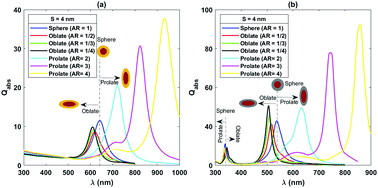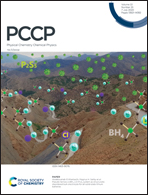An optimal architecture of magneto-plasmonic core–shell nanoparticles for potential photothermal applications
Abstract
In this work, the optical responses of Fe3O4@Au and Fe3O4@Ag are comprehensively investigated using the discrete dipole approximation. It is found that the resonance wavelength and absorption efficiency strongly depend on the composition of the core and shell, geometry of the nanoparticles, core to particle volume ratio, core radius and shell thickness. The strongest impact is due to the shell material, the shape of the nanoparticles and their combination. When the composition of the shell is changed from gold to silver, instead of one fundamental resonance peak the absorption spectrum shows two, corresponding to the bonding plasmon mode at the nanoparticle–environment interface and antibonding mode at the core–shell interface. The results also reveal a much higher tunability of the resonance wavelength as well as larger enhancement of the absorption efficiency as the spherical nanoparticle stretches to a prolate ellipsoidal shape. Furthermore, higher order plasmon modes appear in the absorption spectrum of prolate nanoparticles with a large aspect ratio. The existence of several plasmon modes together with wide tunability makes these nanoparticles good candidates for applications where two or more simultaneous absorption bands at different frequencies are required. These results might motivate experimentalists to optimize the synthesis of magnetic-plasmonic core–shell NPs in different applications as far as absorption is concerned.



 Please wait while we load your content...
Please wait while we load your content...